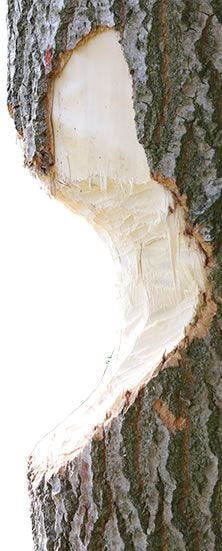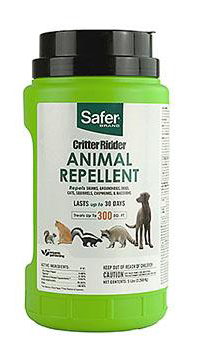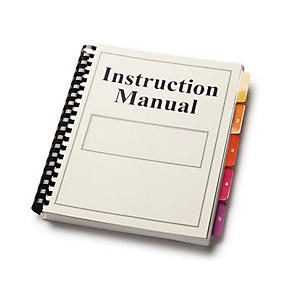Repelling 101
In this section, Havahart® provides general repelling information. You'll find an overview of how to repel animals, different repellent styles available and answers to all of your general animal repelling questions.

How to Repel a Wild Animal
Are animals wreaking havoc on your property? Learn how to repel any animal and get rid of nuisance critters once and for all. For animal-specific repelling advice, select your animal in the Animal How-To Section »

1 Identify Your Nuisance Animal
It's important to know what type of animal is causing damage in your yard so that you can effectively repel it using the best tactics and repelling products for that particular critter. You can do this by taking a look at the damage that is occurring - for example:
- Deer damage occurs between 3-6 feet above ground level. Deer prefer the most tender parts of plants including buds, young stems and leaves.
- Squirrels and chipmunks steal birdseed. Squirrels chew through materials like siding and wood in order to access shelter, while chipmunks dig burrows, which can damage building foundations.
- Groundhogs chew anything wooden in order to sharpen their teeth. They also burrow, leaving large holes and dirt mounds.
- Raccoons raid trashcans and tip over flowerpots.
- Rabbit damage occurs up to 3 feet from the ground, in the form of clean, angled cuts on the end of stems and leaves.
Cats and dogs urinate on your lawn, killing grass.
For more damage-identification tips and animal-specific repelling instructions, visit the Animal How-To page and select an animal.

2 Know What You Want to Protect
Whether you want to defend your entire yard, a small vegetable garden, or one bird feeder, it's important to identify exactly what area or surface you want to target, so you can determine what kinds of repellents to use.
3 Select the Best Animal Repellent(s)
Once you've identified your target animal and determined the areas you want to protect, use the information below to choose the best animal repellent for you. Note, different repellents serve different purposes, so the more solutions you employ, the better your chances at keeping animals away long-term.
Liquid Repellents

Best For: Preventing animals from browsing and/or damaging targeted surfaces. Spray directly onto surfaces such as:
- flowers
- shrubs
- mulch
- ornamentals
- seedlings
- woodpiles
- trees
- bulbs
- bird feeders
- trashcans/bags
TIP: Most liquid repellents are for outdoor use only, and must be sprayed in temperatures above 40° F.
Granular Repellents

Best For: Keeping animals out of protected areas. Sprinkling granules creates a repellent barrier around areas including:
- gardens
- entryways
- garages
- burrows
- flowerbeds
- houses
- attics
- gutters
- flowerbeds
- houses
- attics
- gutters
TIPS: Spread granules on grass to prevent animals from digging. Granular repellents can be used in any weather, and some may even be used indoors. For more information about choosing between repellent types, read Liquid vs. Granular Repellents »
Covered Repelling Stations

Best For: Guarding plants and edible crops - the repellent is contained and protected in a durable casing, so it is completely weatherproof and does not contact your edible crops. Apply them in various ways, including:
- staked throughout vegetable gardens
- positioned around yard perimeters
- placed in planters or flower pots
- hung from trees or fences
TIPS: Covered repelling stations deter animals with scent and therefore work best in warm weather as heat will permeate through the station and carry the odor better than in cold weather.
Electronic Repellents

Best For: Effectively repelling animals without chemicals. Electronics are also very convenient, as they run 24/7 without intervention. Types of electronic animal repellents include:
- Motion-Activated Sprinkler Repellents: These highly effective scare devices frighten away a large variety of animals with startling bursts of water.
- Ultrasonic Repellents: These devices are mainly targeted at rodents and/or moles, and they repel using piercing, high-pitched sounds only these small animals can hear.
- Wireless Fence Posts: Targeted specifically to deer, these devices use an acorn scent to lure animals towards electrodes that deliver a conditioning static shock.

4 Apply as Directed
The effectiveness of an animal repellent is contingent upon its proper application. It is critical that the user follows the directions for use on the repellent’s packaging. Some important steps include:
- Reapply liquid and granular repellents periodically as directed and after periods of heavy rainfall to maintain repellency.
- Shake liquids well before each use to ensure the proper mixing of active ingredients and to prevent clogging the sprayer.
- Position motion-activated sprinkler repellents and other electronics so that their motion-sensors point in the direction in which animals are approaching.

5 Reduce Attractants
Animals are attracted to areas with available food, water, shelter and/or cover. Regularly maintaining your yard can make your home less inviting to animals and increase the effectiveness of your repellents. Some actions you can take include:
- cleaning up fallen berries, nuts, birdseed, etc.
- harvesting crops as early as possible
- replacing bird seed with thistle
- removing garbage and securing trashcans
- filling in any abandoned animal burrows
- mowing grass, pulling weeds and raking leaves
- trimming back overgrown plants
Expert Tips
- Animal repellents should be applied at the very first signs of animal damage to prevent critters from developing destructive habits, which are often difficult to break.
- When applying liquid repellents, it’s important to thoroughly spray the repellent onto all parts of the plant you want to protect until the liquid begins to run off.
- If you plan on using a high quantity of liquid repellents, either for a large property or for multiple uses, try a concentrated repellent. With concentrates, you can mix a small amount with water to get more ready-to-use liquid.
- Concentrates are also great for protecting bulbs - before planting them, dip bulbs into a concentrated solution that’s proven to repel your nuisance animal.
- Patience is key when it comes to repelling animals. Although most liquid and granular repellents are effective immediately, it may take several interactions for an animal to associate the unpleasant irritation with the protection area. In some cases, more repellent may be needed, OR some may need to be applied in a different location to influence the interaction that will ultimately repel the animal.
- Avoid homemade animal repellents; their effectiveness is inconsistent and unproven. Additionally, homemade animal repellents don't have any sticking power, and must be re-applied after every rainfall.
